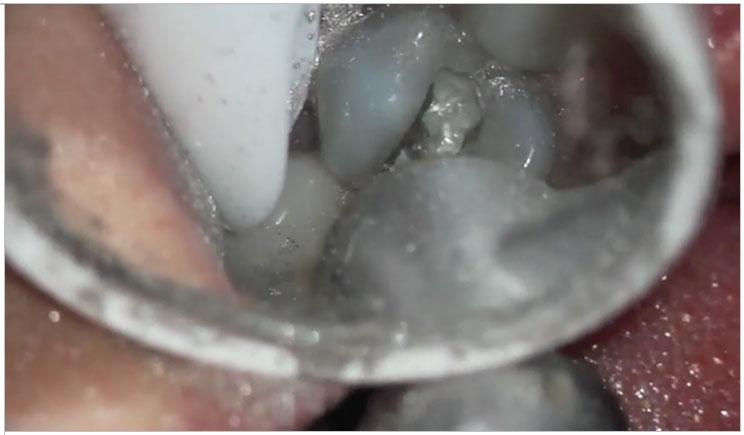
Technology has the capability of opening up the lines of communications between dentists and their patients. It’s hard to fully comprehend a problem and its solution when it can’t be seen. That’s why, for example, auto mechanics sometimes take customers on the shop floor so they can see a worn part for themselves. Doing so also builds loyalty because those customers aren’t worried that they’re paying for a repair they don’t actually need.
It’s an approach that dentistry can and should follow. One reason is financial. More than 30% of patients in a Futuredontics survey think dentists try to sell unnecessary treatments. This concern can undermine the dentist-patient relationship and, worse, prompt some patients to forego necessary treatment, leading to further damage and discomfort.
The good news for dentists and patients alike is that technology offers a solution. Photos and video can show patients conditions such as decay, plaque, lesions, and cracks. Most people who grind their teeth don’t realize it, and decay sometimes isn’t advanced enough to cause pain by the time of their next regularly scheduled appointment. They also might not notice a lesion if it’s painless even though that can be a sign that it’s cancerous.
Video and photos make it easier for patients to understand these and other conditions, including their seriousness and treatment options. That’s key because the Futuredontics survey also found that 93% of patients will go back to their dentist if they receive a clear explanation of required versus optional treatments. In the process, these images fundamentally change the process of care in ways that benefit both patients and their dentists.
Taking Ownership
When patients understand a condition, they’re more likely to take ownership of the treatment, leading to better outcomes. For example, one online video shows a patient who has no pain. But there’s a crack in his tooth connecting to an old amalgam. When the filling is removed and the crack goes down the center of the tooth, there is no doubt that the patient has a problem.
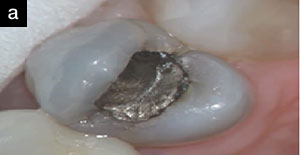 |
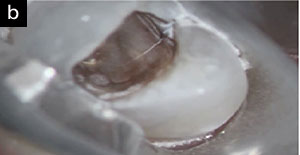 |
| 1. Video footage of the troubled tooth help patients understand why they need treatment and what the best options for care may be. For example, patients who otherwise feel no pain would be able to see cracks in their teeth that need to be addressed. |
With video, the options of filling, tooth removal, a possible root canal, and/or a crown can be clearly discussed, allowing the patient to participate with knowledge about the risks involved. Without video, patients would often have a filling placed and subsequently blame the dentist because all they had to go on is they had no pain when the dentist first worked on the tooth (Fig. 1).
An Ounce of Prevention
Images also help shift the technological focus from treatment to prevention. In their advertising, many dentists highlight treatment technologies such as hard-tissue lasers and CAD/CAM equipment that makes a crown in one visit. These are welcome advances and effective market differentiators, but they also distract from the most important message: Using technology to help patients preserve their teeth and gums rather than having them repaired or replaced.
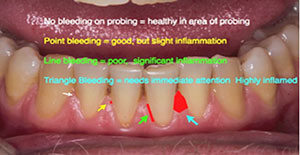 |
| 2. Dentists can use videos as educational tools to help illustrate the symptoms and severity of periodontal disease. |
All of the new patients should receive a comprehensive exam, including a video of their oral condition. Most patients know they should be flossing their teeth, but an exam showing how their gums are irritated, inflamed, and bleeding illustrates why they need to address the problem. Another online video is helpful for explaining the process of good health and the different stages of disease. With this personal knowledge, patients become motivated and successful at improving their periodontal health (Fig. 2).
Real-Time Video
When treatment is necessary, patients have the option of watching it. A dentist’s office records the highlights of every dental restorative procedure. Ninety-eight percent of my patients choose to watch so they can see what the problem was and the final filling or restorative solution.
For example, we recently shot video of a patient whose parent is a retired dentist. He was not sure if the dark stains in the grooves of his teeth were decay. It was extremely helpful for him to be able to see the extent of the decay that had penetrated to the next tooth structure, the dentin (Fig. 3).
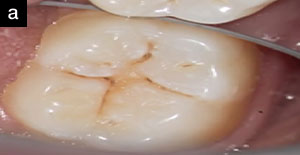 |
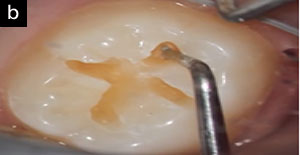 |
| 3. Videos can reveal the extent of suspected but difficult to discern problems, such as whether or not dark stains could be decay. They also can encourage patients to take better care of their teeth once they’ve had a closer look at decay and other problems. |
These experiences also can help with prevention because patients have seen firsthand what the treatment involves, alleviating the concerns about receiving unnecessary treatments.
Building Trust and Loyalty
The ability to see a condition with more than an X-ray, as well as its treatment, helps foster trust between the patient and dentist. That builds loyalty. Today, it’s rare for a person to stay with the same dentist for five or 10 years because of changing insurance networks and moving.
Many patients come to my suburban Chicago office from more than an hour away or even from other states. Though they often have moved away and tried to another dentist, they return because of the quality care that they know they are receiving and the options of treatment they have as we co-diagnose via the video recording.
I have been recording since the late 1990s. About two years ago, I received a new patient from Hawaii. He could not find a dentist he was comfortable with, so he flew to Chicago for a week and had about 12 fillings done. This year, he moved to San Diego. I did one small filling and found a dentist for him closer to his new home. He said he would be back next year.
Video also clearly documents patients’ problems. If some difficulty of treatment occurs, the dentist has a clear documentation of what happened. When patients claim the dentist “chipped” their tooth, the video shows the chip was there before treatment. This takes the onus off the dentist and places the dental problems squarely on the patient, whom the dentist is trying to help.
What’s the Cost?
Adding video and/or photo capabilities to a practice doesn’t necessarily cost six figures. One reason is because imaging technologies often can reuse existing equipment.
For example, some dentists use microscopes to achieve magnification five times greater than alternatives such as loupes. Those microscopes also are a convenient, cost-effective way to capture video and still images because they leverage equipment that those dentists already own.
This “bolt-on” approach also encourages image use for more of a practice’s patients because those dentists don’t have to learn new systems. They simply continue to use their microscopes, except now they’re also feeding a video display and/or saving to a drive for archiving.
For those who don’t use microscopes, there are several other options. One is to use an intraoral camera, which is relatively inexpensive and something that many practices already have. Another option is digital single-lens reflex cameras (SLR), most of which support video. These are widely available in consumer and professional versions and at a variety of price points.
Most dental offices have monitors to display x-rays for the patient. Video and photos can be routed to these displays, leveraging equipment those dentists already have.
Dentists also should consider how to store video and photos. Higher resolutions result in larger file sizes, so it’s important to have enough storage. The amount varies greatly based on factors such as the equipment. In the digital age, every office should have a computer consultant to guide the dentist. Storage-related costs are easily covered by patient retention.
Another consideration is how to share videos and photos. Some of my patients like to have them provided on a USB thumb drive. Others prefer to have them uploaded to YouTube, with their personal information stripped out to ensure confidentiality. In both cases, they like these options because they can share their treatment with family members. When they do, it helps their spouses, children, and siblings understand the treatments that are available. It also reinforces the prevention message.
People often look at a business’ technology when deciding whether to remain or become a customer, and dental practices are no exception. By offering video and photos, dentists can appeal to people who perceive cutting-edge technology as a sign of cutting-edge care. More importantly, video and photos enable dentists and their patients to communicate more effectively and spend more time preventing problems than treating them.
 Dr. Craig S. Kohler, DDS, MBA, MAGD, has been practicing on the North Shore of Chicago for more than 30 years. After completing his residency, he earned his Fellowship and master’s from the Academy of General Dentistry by completing 1,600 hours of continued education, an award that less than 1% of the dentists in the nation earn. He also mentors at Evanston Hospital and at the Spears Institute in Scottsdale, Ariz.
Dr. Craig S. Kohler, DDS, MBA, MAGD, has been practicing on the North Shore of Chicago for more than 30 years. After completing his residency, he earned his Fellowship and master’s from the Academy of General Dentistry by completing 1,600 hours of continued education, an award that less than 1% of the dentists in the nation earn. He also mentors at Evanston Hospital and at the Spears Institute in Scottsdale, Ariz.
Related Articles
Diagnosis by Smartphone? There’s an App for That
Videos Take Lighthearted Look at Digital Dentistry
Digital Workflow Triples Efficiency in Crown Work











